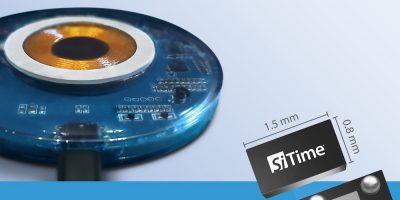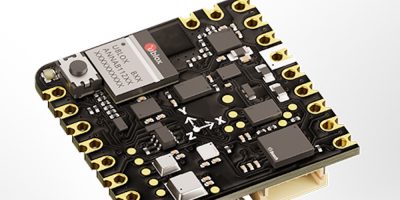For power-sensitive and space-constrained mobile and IoT applications, the SiT3901 uPower digitally controlled MEMS oscillator (DCXO) has been introduced by SiTime. It improves wireless charging speed by up to 25 per cent while reducing the overall timing solution area by up to 90 per cent, says the company. The MEMS oscillator is suitable for wireless charging systems for smart watches, activity trackers, hearing aids, and wearables.
“The power and size requirements of new wireless applications demand a new approach to timing,” says Piyush Sevalia, executive vice president of marketing at SiTime. “The SiT3901 DCXO is the industry’s first µPower digitally controlled oscillator, and it delivers by improving charging efficiency and reducing the area,” he adds.
Wireless charging standards such as Qi and AirFuel rely on resonant power transfer to enable proximity charging. However, environmental interference may dynamically impact the resonant charging frequency, which slows down the charging process. The SiT3901 enables the charger to dynamically tune the resonant frequency, maximising power transfer and delivering up to 25 per cent faster charging. The digital control feature on the SiT3901 DCXO eliminates the need for additional passive components on the board, reducing the timing solution area by up to 90 per cent. The resulting charging system works better and is smaller, more manufacturable, and more reliable, claims SiTime.
The SiT3901 DCXO extends SiTime’s µPower MEMS oscillator family targeting power and space-constrained wearable, hearable, IoT, and mobile applications. The µPower MEMS oscillators consume up to 90 per cent less power and up to 90 per cent less space compared to quartz oscillators, enabling environmentally friendly electronics. The SiT3901 offers high resilience to analogue noise and includes low 105 microA current consumption (typical), a wide digital pull range (up to 15 per cent) for output frequency and a programmable frequency of 1.0 to 26MHz. They are stable over temperature of ±50 and ±100 ppm and have a wide operating temperature range of -40 to +85 degrees C.
The oscillators are supplied in a small 1.5 x 0.8mm package size.






